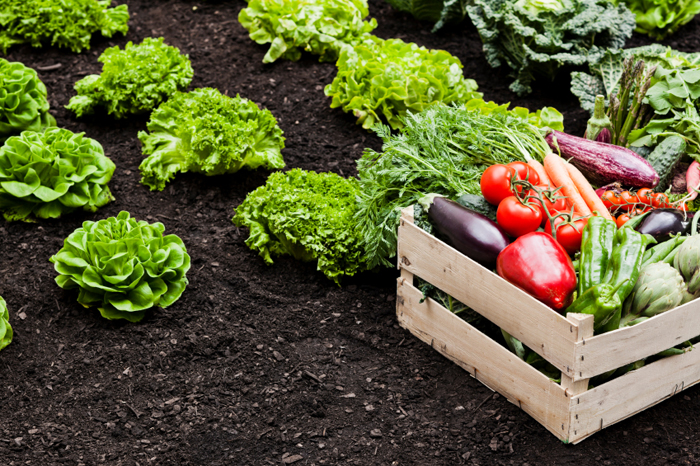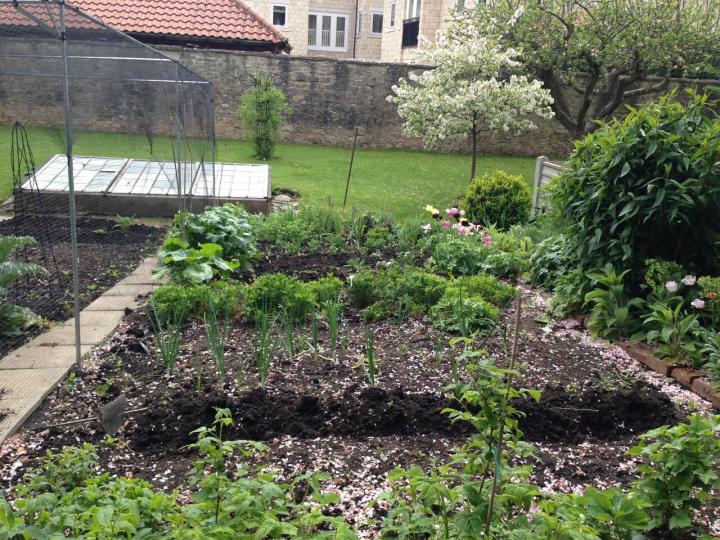How to Go Green with Homestead Gardening
How to Go Green with Homestead Gardening
Blog Article
Learn Just How to Cultivate a Growing Gardening Environment for All Ability Degrees
Creating a growing yard is a diverse venture that can be embraced by individuals at any kind of ability level. By analyzing vital elements such as soil health and wellness, proper plant selection, and seasonal treatment regimens, one can establish a sustainable horticulture practice that produces enjoyable results.
Recognizing Your Garden Area
In the world of gardening, recognizing your yard space is vital to cultivating a growing landscape (Homestead Gardening). The initial step in this endeavor involves evaluating the details characteristics of your plot. Elements such as soil structure, sunlight direct exposure, and drainage play crucial functions in establishing the viability of your yard for numerous types of plants
Begin by conducting a soil test to evaluate pH levels and nutrition material, which will notify any type of needed changes. Furthermore, observe just how much sunshine your area gets throughout the day. Various plants have varying light demands; some flourish completely sun, while others choose full or partial shade.

Lastly, evaluate the available space and strategy as necessary. This consists of thinking about plant heights and infected ensure adequate area for development without overcrowding. By gaining a comprehensive understanding of your yard room, you set the foundation for an effective horticulture experience.
Selecting the Right Plants
Picking the right plants for your garden needs mindful factor to consider of different elements, consisting of environment, soil problems, and individual preferences. Beginning by analyzing your regional climate, as details plants prosper particularly temperature ranges and climate patterns. Exotic plants may not endure in chillier areas, while sturdy perennials can hold up against extreme winters.

Consider your individual preferences, consisting of aesthetic charm and upkeep levels. Determine whether you prefer lively flowers, rich vegetation, or edible crops. Furthermore, factor in the time and initiative you agree to purchase plant treatment, as some varieties demand even more focus than others.
Lastly, believe concerning the garden's design and light direct exposure. Sunlight patterns throughout the day will influence your selections-- some plants require full sun, while others grow in color. By thoughtfully evaluating these components, you can create a effective and unified yard tailored to your environment and tastes.
Vital Horticulture Devices
A well-appointed garden enthusiast can dramatically boost their horticulture experience and end results. Important horticulture devices are basic to growing an effective yard, despite skill degree. First, a tough spade is vital for excavating and turning soil, while a trowel allows for precise growing and hair transplanting of smaller sized plants.
Pruning shears are vital for keeping plant wellness by eliminating overgrown or dead branches, advertising far better air flow and growth. Additionally, a hand rake works for getting rid of debris and aerating the dirt, guaranteeing optimal problems for plant origins.
Gardening handwear covers secure hands from blisters, chemicals, and thorns, making them an essential device. A watering can or hose pipe with a flexible nozzle makes sure that plants receive ample wetness without overwatering.
Lastly, take into consideration spending in a sturdy wheelbarrow for moving soil, plants, and devices around the garden successfully. By putting together a quality toolkit that includes these essential products, gardeners can deal with various tasks with self-confidence and ease, leading the way for a prospering gardening atmosphere. Bear in mind, the right tools not just improve effectiveness yet also improve the overall pleasure of the horticulture procedure.
Soil Prep Work and Upkeep
Quality soil is the structure of an effective garden, useful source making appropriate prep work and upkeep important for healthy and balanced plant development. The very first step in dirt preparation includes checking its pH and nutrient degrees. This can be achieved with dirt screening kits offered at horticulture facilities or via professional services. Based upon the examination results, modifications can be made to optimize soil conditions for certain plant needs.
Including natural issue, such as garden compost or well-rotted manure, is essential for improving soil structure and fertility. This not only enhances nutrient availability however likewise promotes useful Extra resources microbial activity. Furthermore, appropriate drain is important; heavy clay soils may require the enhancement of sand or perlite to boost oygenation.
Normal upkeep of soil health and wellness includes mulching, which conserves moisture and subdues weeds. In addition, rotating crops yearly helps prevent nutrient deficiency and lowers parasite and illness dangers. It is also important to stay clear of over-tilling, which can interrupt soil framework and damage useful organisms.
Inevitably, a constant commitment to dirt prep work and maintenance will certainly result in a flourishing yard, guaranteeing that plants receive the crucial nutrients they require for robust development and productivity.
Seasonal Treatment and Administration

In spring, concentrate on planting brand-new seeds and plants, while additionally carrying out dirt tests to modify nutrient deficiencies. Consistently look for parasites and diseases, as these can multiply with the warming weather. Summertime needs consistent watering and mulching to maintain moisture, together with trimming for better air blood circulation.
As autumn approaches, it's time to prepare the yard for dormancy. This consists of harvesting crops, cleansing up particles, and applying a layer of mulch to shield plant roots from frost. Think about growing cover plants to enrich the soil throughout the winter season.
Inspect structures like greenhouses for damage and guarantee proper insulation for sensitive plants. By adapting your gardening practices to the seasonal cycles, you can promote a growing atmosphere that supports plant health and wellness year-round.
Conclusion
Finally, cultivating a Recommended Reading successful garden needs an extensive understanding of vital principles such as soil composition, sunlight exposure, and appropriate plant option. Applying reliable dirt prep work and maintenance techniques, along with making use of the right devices, promotes an ideal growing environment. Normal seasonal treatment and administration methods even more enhance plant wellness and performance. By adhering to these foundational standards, people whatsoever skill degrees can accomplish a flourishing yard that adds to both aesthetic enjoyment and ecological sustainability.
Picking the right plants for your garden calls for cautious factor to consider of different factors, consisting of climate, dirt conditions, and individual choices. Conduct a soil examination to identify pH degrees and nutrition web content, which will lead you in choosing plants that will certainly thrive in your yard.Lastly, take into consideration investing in a strong wheelbarrow for transferring dirt, plants, and devices around the garden successfully.Quality soil is the foundation of a successful garden, making proper preparation and upkeep important for healthy and balanced plant growth. Homestead Gardening.In final thought, growing a successful garden calls for a comprehensive understanding of necessary concepts such as soil structure, sunshine direct exposure, and suitable plant choice
Report this page